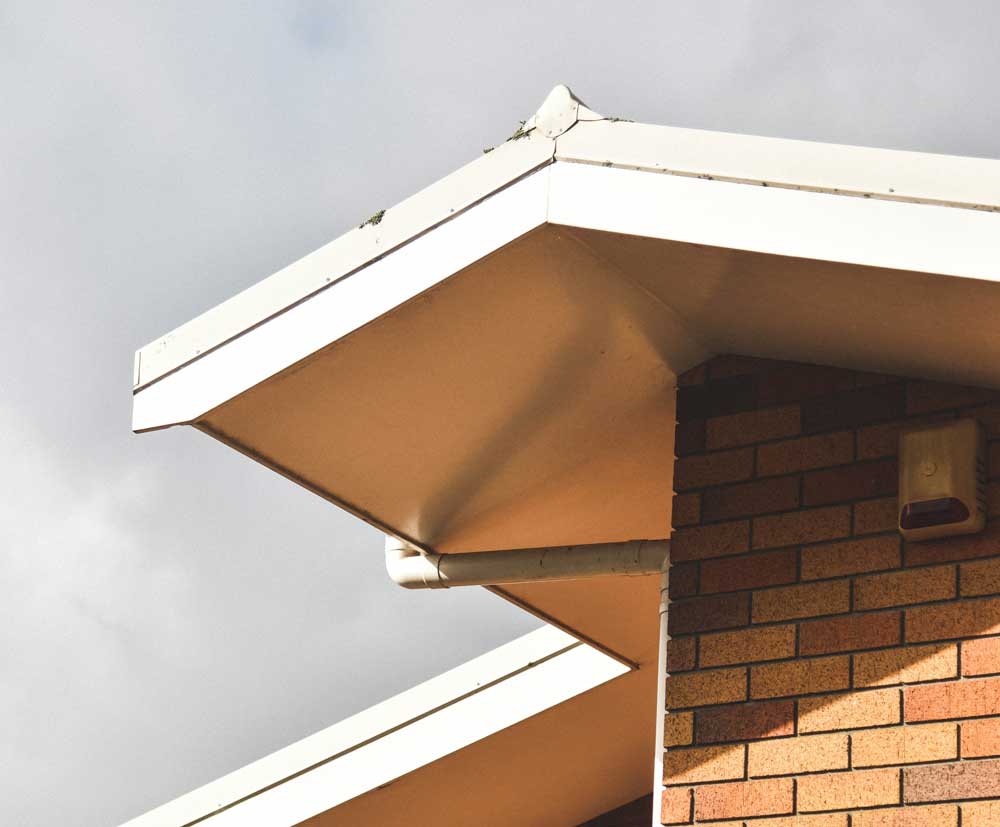If your gutters overflow in really heavy rains for no apparent reason, the first place to look is whether or not your outlets are too small. It may be (and probably is) that simple.
So let’s talk about outlets. You may not have heard of them, but they play a key role in the flow capacity of your gutter system. Outlets are hardware located at the place in the gutter where the downspout attaches. It is where the water goes from being collected in the gutter to being drained from the gutter and away from your house. You can think of it like the drain in your bathtub. You can have a bathtub that holds 100 gallons of water, but it will only empty as fast as the size of the drain permits. And if you fill your bathtub faster than the water can drain out, the bathtub will overflow. It’s the same with your gutters and outlets.
A one and a half inch (1.5”) diameter outlet has a surface area, or size of the hole, of slightly over 1.75 square inches. That’s the hole that the water has to get out of. 1.5-inch round outlets are the most common outlets that we see on production type gutters. Why? Because they are the least expensive and easiest to install, saving time and money for the contractor. Even saving just $10 in materials per job on 100 jobs in a year will mean an extra $1,000 in a contractor’s pocket at the end of the year.
However, our standard outlet is 2×3”, and has a surface area, or hole size, of 6 square inches. Over three times the size of the hole for the water to exit! That means that the same size gutter can remove three times (3x) as much water from your roof, just by having larger outlets. On 6k gutters, we can install outlets up to 3×4”, which means that the outlet is 12 square inches or more than six times the amount of water that can exit at once.
We often find that we can dramatically improve your gutter system’s performance just by changing out your outlets and downspouts.
There are two basic types of readily available downspouts: plain square and corrugated. We almost always recommend corrugated downspout for reasons we explain below.
Plain square is popular because of its sleek look, with plain surfaces and square shape. Plain square downspout installation requires each bend in the metal to be cut and bent. And that’s where the problems can begin. Each cut exposes unpainted steel to air, and over time the edges of the cuts start rusting. Also, there is no standard for the angles of the cuts, so many times they are cut with no slope for part of the downspout, a perfect place for debris to accumulate and clog the downspout. Finally, each cut has a small tab of metal on the inside that is a place for debris to catch and create a clog.
The other common type of downspout is generally called “corrugated,” and this is the style we recommend. The name comes from the fluting in the sides, which are there for strength and stability. Corrugated downspouts have pre-made curves designed to speed the flow of water away from the outlet and gutter. Corrugated downspouts are slightly larger in diameter and allow for installation of a larger outlet, both of which increase the speed at which water can exit the gutter and improve the flow capacity. Its aesthetic isn’t as sleek or “sexy” to some, but we think optimal functionality is pretty darn attractive.
We sometimes see round downspout, which we can provide when needed.
To learn more about how we can help you optimize the flow of your gutter system, give us a call at (503) 407-3346.

